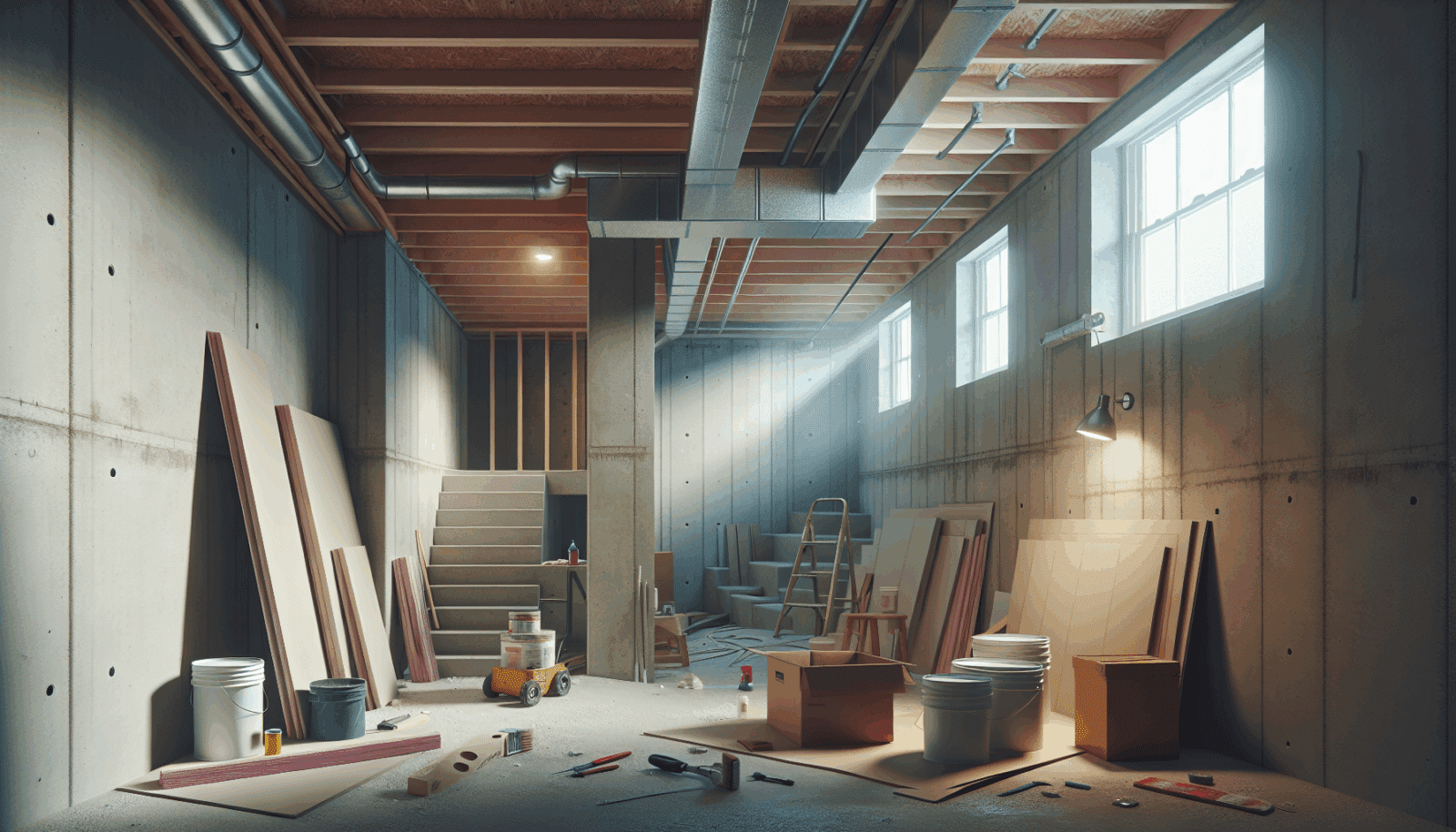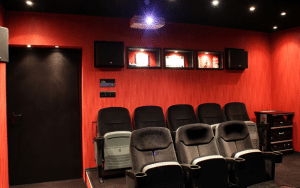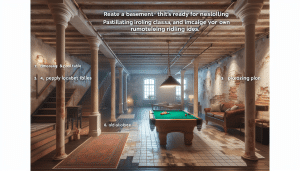Finishing your basement walls can be both exciting and a bit daunting. At Utah Basement Finishing, we understand the nuances, challenges, and rewards of converting your basement into a beautiful, functional space. Frequently, homeowners are unsure about where to begin or what to consider in the finishing process. This comprehensive guide will serve as your roadmap, equipping Salt Lake County, Davis County, and Utah County residents with expert tips on transforming your basement walls into a masterpiece.
Contents
- 1 Understanding Your Basement’s Environment
- 2 Setting a Realistic Budget
- 3 Choosing the Right Insulation
- 4 Framing Your Basement Walls
- 5 Drywall Installation Tips
- 6 Selecting Wall Finishes
- 7 Lighting and Electrical Considerations
- 8 Accessorizing with Built-ins
- 9 Handling Moisture Concerns
- 10 Final Touches and Maintenance
Understanding Your Basement’s Environment
The first step in finishing your basement walls is getting to know the environment you’re working with. Basements tend to be more humid than the rest of your home, often requiring special considerations in wall finishing. It’s crucial to assess moisture levels before diving into any project. Tools like a hygrometer can help measure humidity and assist you in choosing the right materials that resist mold and moisture.
Moreover, be aware that temperature fluctuations can impact your basement finishing project. Insulating the basement walls appropriately not only helps in maintaining a consistent temperature but also increases energy efficiency. Observing how your basement reacts to seasonal changes will arm you with essential information for the next steps.
Setting a Realistic Budget
Budgeting for your basement wall finishing is an important aspect that shouldn’t be overlooked. Start by setting a clear, realistic budget that includes materials, labor (if needed), and a contingency fund for unexpected expenses. Keep in mind that high-quality finishes may Cost more up front but can save you money in the long run by preventing damage and increasing your home’s value.
Our team at Utah Basement Finishing recommends obtaining multiple quotes for materials and Services. This not only gives you a good starting point but also ensures competitive pricing. Remember to factor in tools and potential permits, which can often be forgotten in the initial budgeting phase.
Choosing the Right Insulation
To ensure your basement is comfortable year-round, selecting the proper insulation is crucial. There are several types of insulation to consider, including foam board, fiberglass, and spray foam. Foam board offers high insulation value and moisture resistance, making it a popular choice for many homeowners.
Fiberglass, on the other hand, is versatile and often budget-friendly, though it requires a vapor barrier to protect against moisture. Spray foam delivers superior sealing capabilities but can be more costly. Evaluate the needs of your specific basement space to choose the most effective option for you.
Framing Your Basement Walls
Framing is the structural backbone of your basement wall transformation. It’s important to decide whether to use steel or wood studs, as each comes with its pros and cons. Wood is affordable and easy to work with, but it can warp due to moisture unless treated. Steel, while less susceptible to moisture damage, can be harder to manipulate during installation.
Precise measurement is crucial during the framing process. A well-executed frame will provide a stable foundation for drywall, paneling, or any other finishing materials. We recommend consulting with a professional if you’re uncertain about tackling this step on your own.
Drywall Installation Tips
Once your framing is ready, drywall can quickly transform the skeletal structure into a finished wall. Start by selecting moisture-resistant drywall panels, especially crafted for basement environments. These panels help prevent mold and ensure longevity.
When installing, always stagger the drywall seams to increase wall strength and minimize cracking. Secure each panel with screws, and don’t forget to use joint tape and compound for a smooth finish. Sanding down any bumps will ensure a professional look once painted.
Selecting Wall Finishes
Choosing the right wall finish can dramatically affect the ambiance of your basement. Paint is the most economical option, offering a variety of colors and finishes. Opt for moisture-resistant paint formulated for basement walls to prevent issues like peeling or bubbling.
For a more upscale touch, consider wainscoting or wall paneling. These options enhance aesthetic appeal while protecting walls from potential damage. Explore different materials like beadboard or reclaimed wood for unique textures and styles that fit your taste.
Lighting and Electrical Considerations
Lighting can make or break your finished basement space. Since basements often lack natural light, effective use of artificial lighting is essential. Recessed lighting is a popular choice as it provides even illumination and opens up the area without cluttering the ceiling space.
When planning electrical work, ensure all wiring meets current codes and safety standards. An experienced electrician can not only install the necessary outlets and switches but can also guide you in designing a lighting layout that best highlights your new walls.
Accessorizing with Built-ins
Built-in shelves and cabinets add utility and style to your basement walls. They are perfect for storing books, electronics, or decorative items, all while maximizing space. Consider customizing built-ins to meet your specific storage needs or aesthetic preferences.
Using high-quality materials and expert craftsmanship will ensure that these additions aren’t just functional but also a beautiful asset to your finished space. Our team is adept at designing and building built-ins that seamlessly integrate with your wall plans.
Handling Moisture Concerns
Moisture is a persistent foe in basement finishing. Address potential issues by ensuring your basement is equipped with proper drainage and a sump pump if needed. Utilize dehumidifiers to keep humidity levels in check, reducing the risk of dampness and mold growth.
Another preventative measure is sealing any visible cracks in the foundation or walls. Regular inspection and maintenance will help in quickly identifying and resolving minor issues before they become major problems.
Final Touches and Maintenance
With the hard work done, it’s time to focus on the finishing touches that will bring your space to life. Decorate with furniture and accessories that reflect your personality, ensuring the room is both functional and inviting. Utilize area rugs and artwork to add warmth and color to the walls.
Don’t forget that ongoing maintenance is key to preserving your newly finished basement walls. Regularly inspect for signs of wear, damage, or moisture build-up to keep your space in prime condition. Establishing a routine will help prolong the life and beauty of your basement walls.
At Utah Basement Finishing, our team is ready to help transform your basement. Contact Us today by phone # 801-515-3473 or Request a Free Quote to start your basement project journey.




